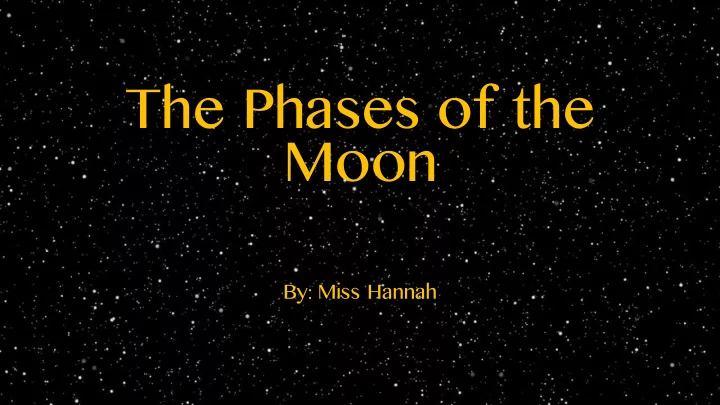

The Phases of the Moon By: Miss Hannah
Why does the Moon have phases? It depends on the position in relation to the Sun and Earth. As the Moon makes it way around Earth, we see the bright parts of the Moon’s surface at different angles.
Phases of the Moon • New Moon • Full Moon • Waxing Crescent • Waning Gibbous • First Quarter • Last Quarter • Waxing Gibbous • Waning Crescent
New Moon The side of the Moon facing the Earth is not illuminated. The moon is up through out the day, and down through out the night.
Waxing Crescent Part of the Moon is beginning to show. It can be seen each evening for a few minutes right after sunset. It’s called ”waxing” because each night a little bit more is visible for a little bit longer.
First Quarter Half of the moon is visible for the first half of the evening, then goes down, leaving the sky dark.
Waxing Gibbous Gibbous Moon means that the Moon is visible. Observers can see all but a little piece of the Moon. The Moon remains in the sky most of the night.
Full Moon You can see the entire face of the Moon. It will rise just as the evening begins and will set about the time morning come in.
Waning Gibbous We can see all but a piece of the Moon. The difference is that we see less and less of the Moon each night, meaning “waning.”
Last Quarter You can see exactly half of the Moon’s lighted surface.
Waning Crescent Observers on Earth can only see a piece of the Moon just before morning. Each night less of the Moon is visible for less time.
Now it’s your turn!
Resources • http://www.kidsastronomy.com/astroskymap/lunar.htm • http://www.primaryhomeworkhelp.co.uk/moon/phases.html
Recommend
More recommend